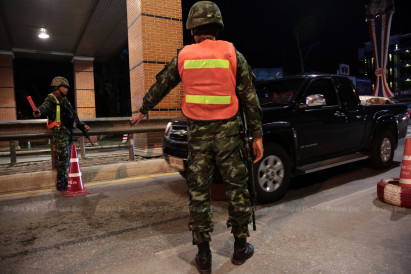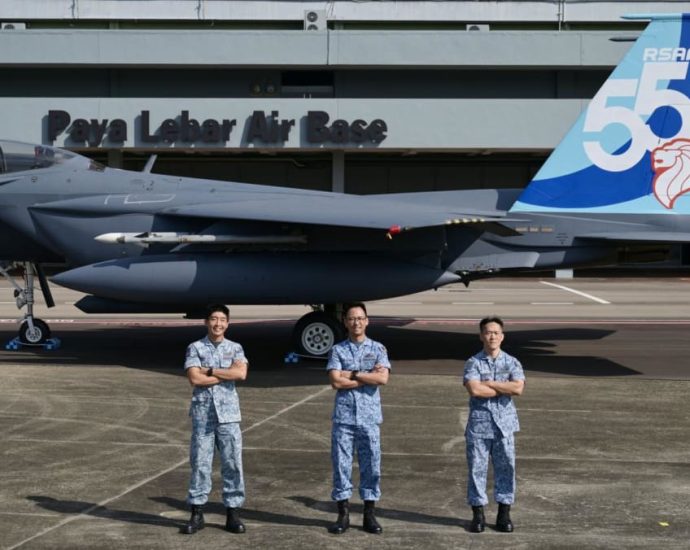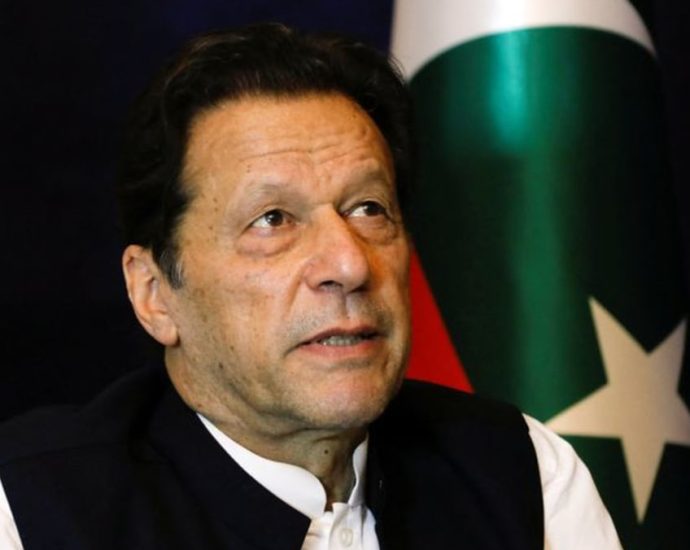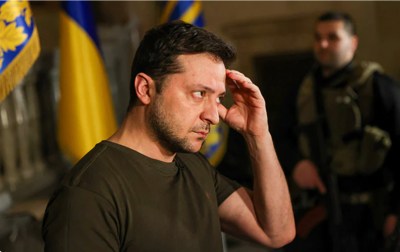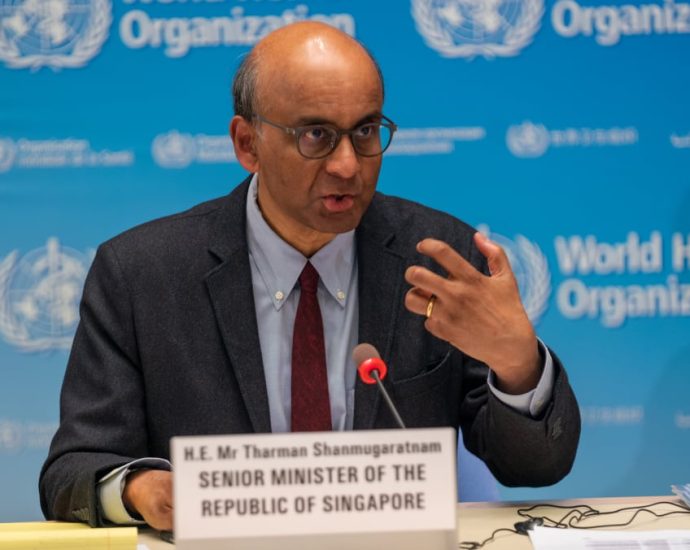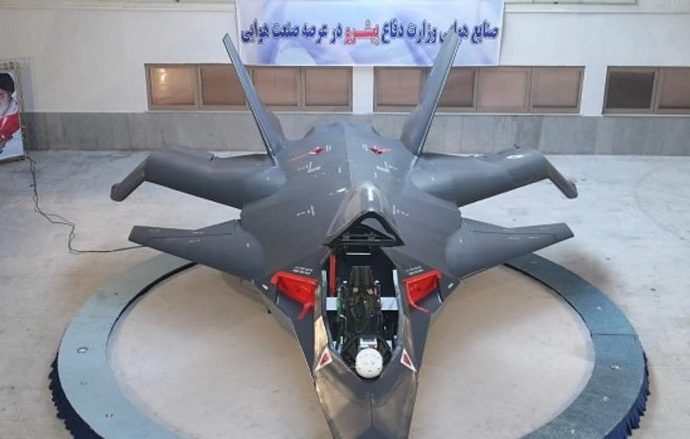Southern independence referendum movement watched
Security agencies say student movement advocating ‘Patani State’ could be breaking the law

Security agencies are keeping a close watch on a group that has called for a public referendum on the independence of “Patani State” from Thailand, because doing so is tantamount to an act of separatism and unlawful, says the deputy commander of the 4th Army Region.
Maj Gen Pramote Prom-in said the referendum call was raised during an event held to introduce the “National Student Movement” or “Pelajar Bangsa” of the four southern border provinces, on the Pattani campus of Prince of Songkla University on Wednesday.
Although the students have the right to express their opinions, they should be careful not to transgress the laws and territorial sovereignty of the country, said Maj Gen Pramote, adding that security agencies had been keeping their activities under watch.
Maj Gen Pramote said the authorities are duty-bound to make people in society understand that such an expression of opinion was inappropriate, considering the sensitivity over security in the region that has long been plagued with insurgency.
The legal office of the 4th Army Region, which is responsible for the South, is considering taking legal action against the student movement, he added.
Maj Gen Pramote said that calling for a public referendum for the independence of “Patani State” (the spelling preferred by the movement) from Thailand is an act of separatism and prohibited by the law. Section 1 of the 2017 constitution stipulates that “Thailand is one and indivisible Kingdom”.
The Pelajar Bangsa movement is led by Irfan Uma. It was formed after the Federation of Patani students, or PerMAS, was dissolved on Nov 8, 2022.
The group organised a panel discussion on the “Right to Self-Determination” on Wednesday. The panelists included Assoc Prof Mark Tamthai of Payap University in Chiang Mai; Voravit Baru, an MP-elect for Pattani and deputy leader of the Prachachart Party; and Hakim Pongtiko, deputy secretary-general of the Fair Party, which has one member in the new coalition led by the Move Forward Party.
Local reports said that participants did not explicitly call for a referendum. But a placard put up at the venue said: “Do you agree with the right to self-determination or not, allowing the people of Patani to be able to legally vote in a referendum for independence?” with spaces for people to mark whether they agree or disagree.
Since January 2004, the southern border provinces of Pattani, Yala and Narathiwat, and occasionally Songkhla, have been the scene of sectarian armed conflict that has claimed over 7,000 lives, about 90% of them civilians.
The caretaker government has affirmed that it will continue its policy of negotiating for peace in the deep South despite the recent Barisan Revolusi Nasional Melayu-Patani (BRN) announcement that it would suspend peace talks until a new administration is formed.
Want to fly in a military tanker aircraft at the RSAF open house? Public balloting to open in July

RSAF pilot trainees typically travel to the Air Grading Center in Australia for four to five weeks where they undergo aptitude tests by flying CT-4B military training aircraft.
Major (MAJ) Jeremy Lim, head of SOAR and a qualified flying instructor who pilots F-16s, said that instructors like himself can only glean “a limited amount of information” by being with trainees “over a one-hour period of flight” and observing what they do. These trainees do not have any flying experience prior to Australia.
With SOAR, trainees undergo a two-week course in Singapore. They will complete simulator flights comprising four missions, such as the general handling of aircraft as well as advanced manoeuvres.
MAJ Lim said that these missions present a “steep learning curve” for trainees and are “quite sufficient” for the moment.
Users of the simulator can perform risker manoeuvres or those that cannot be accomplished on a training aircraft, such as trying to shoot down a target, he added.
Trainees will also put on sports science wearables, allowing instructors and aviation psychologists to monitor and collect psychophysiological measurements like eye movement, heart rate and facial expressions.
“Holistically, all of this information that’s being captured in this simulator – down to their altitude, air speed – are all being assessed and put into a machine learning in order to inform us how the trainee has the potential in passing their downstream training,” MAJ Lim said.
Soon siblings strike ASEAN Para Games gold again on last day of competition for Singapore
Three other swimmers contributed bronzes to Singapore’s medal tally on Thursday: Janelle Tong in the women’s 50m freestyle S10, Danielle Moi in the women’s 50m freestyle S14 and Wong Zhi Wei in the men’s 50m freestyle S13. Team Singapore also won medals in other sports on Thursday, with bronzes pickedContinue Reading
Pakistan’s Imran Khan appealing to courts to avoid second arrest
Khan’s lawyer, Gohar Khan, said the former prime minister would on Thursday approach anti-terrorism, anti-graft courts and the High Court in the capital, Islamabad, to appeal for bail in connection with more than a dozen cases. Khan, who has been campaigning for an early election since his ouster last year,Continue Reading
No takers for Prabowoâs offbeat Ukraine peace plan
JAKARTA – Defense Minister and presidential candidate Prabowo Subianto’s presumptive Ukraine peace plan may have been shot down before it got off the ground, but it is unlikely to have done him any harm among Indonesian voters who generally have an unusually sympathetic view towards Russia.
Addressing the recent Shangri-La Dialogue in Singapore, Prabowo delivered a speech that was meant to focus on Myanmar and the South China Sea, and instead dwelt in general terms on rising tensions between the US and China.
But it was the closing segment of the 18-minute address where he took a bizarre stab at acting as an international mediator, encouraged perhaps by President Joko Widodo’s adroit handling of last year’s G20 summit held in Bali.
To the bemusement of Kiev, he suggested Russian and Ukrainian forces agree on a ceasefire, establish a demilitarized zone by withdrawing 15 kilometers from their forward positions, and submit to a United Nations referendum on disputed territory.
The former three star general also recommended the UN raise a peacekeeping force to police the proposed DMZ. “Rest assured, Indonesia would be the first country to join,” he said, referencing the country’s past record of peacekeeping in Cambodia, Africa and the Middle East.
Ukraine Defense Minister Oleksii Rezkinov dismissed the proposal out of hand, saying the idea of freezing troops in position “sounds like a Russian plan, not an Indonesian plan” while adding: “We don’t need this mediator coming to us (with) this strange plan.”
European Union (EU) High Representative for Foreign Affairs and Security Policy Josep Borrell, a Spanish socialist politician, weighed in as well, telling his high-level audience there must be a “just peace”, not a “peace of surrender.”
The Indonesian Foreign Ministry was reportedly surprised and unhappy, having already signed off on a previous, carefully-crafted presentation that offered several constructive ideas on regional issues, but made only passing reference to Ukraine.
President Widodo was caught off guard too, summoning Prabowo to clarify some of the key points in the speech which implored officials gathered at Asia’s premier security summit to issue a declaration calling for an end to hostilities.
While he is on good terms with Prabowo, Widodo is having to take an even-handed stance between the Great Indonesia Movement Party (Gerindra) leader and ruling Indonesian Democratic Party for Struggle (PDI-P) candidate Ganjar Pranowo, who share top ranking in presidential opinion polls.
With nine months to go before the election, PDI-P secretary-general Hasto Kristiyanto, who is always in lockstep with party matriarch Megawati Sukarnoputri, couldn’t resist taking a swing at Prabowo, accusing him of undermining Indonesia’s official position of condemning Russia’s invasion.

Some critics compared Prabowo’s plan to a Chinese peace blueprint, largely rejected by the EU because it would allow Russian forces to maintain control over wide swathes of eastern Ukraine occupied since the February 2022 invasion.
Chinese delegates predictably saw merit in Prabowo’s plan. “I appreciate very much efforts from our friends in the region, like South Africa and Indonesia,” said Cui Tiankai, China’s former ambassador to Washington.
Sources familiar with Prabowo’s thinking say he has a soft spot for the Russian people because of their history of struggle against adversity, although that admiration apparently does not extend to President Vladimir Putin.
The original speech suggested a more prominent role for the Indonesian Armed Forces (TNI) in trying to persuade Myanmar’s military regime to accept the Association of Southeast Nations’ (ASEAN) five-point consensus plan to move back towards democratic rule.
It also called for restrictions on the size and armament of coast guard ships in the region. China’s largest vessel, which is the size of a heavy cruiser and packs a 76 mm gun, has been active around the disputed Spratly Islands and close to Indonesia’s Tuna gas block.
The Philippines Coast Guard’s 62-strong fleet includes several frigate-sized vessels and is commanded by a full admiral, compared to the navy which is only headed by a vice-admiral. Indonesia’s Coast Guard is confined to small patrol boats.
Prabowo is one of Indonesia’s few defense ministers to think strategically in deciding what equipment the TNI needs, even if the Defense Ministry doesn’t have the budget to pay for some of the expensive items on his wish list.
While Prabowo’s speech is not the first time he has gone off on a tangent, it may well have tapped into a well of support given the resentment many Indonesians hold toward the US and the West over their war on terror, which has been widely seen as a veiled war on Islam.
That feeling appears to outweigh any obvious parallels that might be drawn between Indonesia’s own history of Dutch colonialism and an imperialist Russian president trying to seize back a former colony in an act of unprovoked aggression.
It is not helped by the fact that Ukrainian leader Volodymyr Zelensky is a Jew, or that many Indonesians see Russia as partially an Islamic state because of the presence of at least 14 million, or 10% of the total population, by far the largest number in Europe.

Although previous Russian leaders often dealt brutally with Chechnya, where 95% of the inhabitants are Muslim, thousands of Chechens have fought in Ukraine and Chechen leader Ramzan Kadyrov describes Putin as Islam’s “most loyal ally and protector.”
Since coming to power in 2000, Putin has carried out a radically different policy towards Muslims than in previous eras. In 2013, he announced that Islam was an integral part of the country’s history, the first time a Russian leader had done so.
A year later, he declared: “Muslims in Russia have every right to feel they are part of the global Islamic nation, and that Moscow has been and remains a geopolitical ally of Islam.”
Turkish newspaper Al-Estiklal said last year that Putin’s rapprochement with Muslims is inseparable from his strategy of geopolitical expansion, and “the restoration of the glories of the ancient empire in its areas of influence in the Balkans and other areas with an Islamic presence.”
Singapore leaders thank Senior Minister Tharman for his ‘enormous contributions’ to the country

SINGAPORE: Singapore leaders on Thursday (Jun 8) thanked Senior Minister Tharman Shanmugaratnam for his contributions to the country after he informed Prime Minister Lee Hsien Loong of his intention to run for the Singapore presidency.
Mr Tharman, 66, will retire from politics and all his positions in government, as well as resign from the People’s Action Party.
He will step down on Jul 7 after fulfilling his immediate official commitments in Singapore and internationally, and ensuring that arrangements are fully in place for the constituents of Jurong GRC, where he is a Member of Parliament.
In his letter to Mr Tharman, Mr Lee listed the Senior Minister’s career achievements, including serving in the Monetary Authority of Singapore with distinction.
“Over two decades, you have held key Cabinet appointments, including Minister for Education, Minister for Finance, Deputy Prime Minister, and Coordinating Minister for Economic and Social Policies. Most recently, as Senior Minister, you have helped me to mentor and groom the next generation of ministers,” said Mr Lee.
Mr Tharman worked hard to build a more inclusive society, and has done much to “promote the growth and resilience of Singapore’s economy”, said the Prime Minister.
“Your departure from the Cabinet and the party will be a heavy loss to me and my team. We will miss your leadership, insightful views, and wise counsel,” Mr Lee added.
Nearly two-thirds of people with disabilities in India unemployed; hesitancy among firms to blame

MANY FIRMS NOT FORTHCOMING WITH HIRING PEOPLE WITH DISABILITIES
At Cafe Arpan, for instance, all its employees have disabilities. It was opened in 2018 by a non-governmental organisation.
The cafe’s co-founder Ashaita Mahajan said companies are often reluctant to hire people with intellectual and developmental disabilities, partly because of a lack of awareness and understanding.
Individuals with disabilities such as autism, Down’s syndrome or cerebral palsy deserve opportunities in normal society, said Ms Ashaita, managing trustee at Yash Charitable Trust.
“They deserve to be able to work. They deserve to be able to have a social life.”
Among the workers at Cafe Arpan, which means “offering” in Hindi, is greeter and server Aarti Nagarkar, who has autism.
The condition affects her speech and motor skills, but she is still able to carry out her role and loves meeting people through her work.
For her, work has become part of her routine.
“I do ‘namaste’ to people,” she said, referring to the greeting. “And I greet, and I say, ‘Welcome to Cafe Arpan’.”
Mira Road murder: Indian man arrested after body parts found in Mumbai home
 Getty Images
Getty ImagesPolice in India’s Mumbai city have opened an investigation into the murder of a woman, allegedly by her live-in partner of three years.
They say 32-year-old Saraswati Vaidya’s body was found in her apartment in Mira Road district on Wednesday.
Police have arrested her partner Manoj Sane, 56, on charges of murder. They allege he “brutally killed” Vaidya and dismembered the body.
Mr Sane is in custody and has not yet made any public statement.
Warning: This story contains details some may find distressing
Police say they reached Mr Sane’s apartment on Wednesday evening after some residents of the building complained of “a foul smell” coming from the house.
Inside the apartment, they found Vaidya’s decomposed body, which had been cut into multiple pieces.
“We are investigating the motive behind the murder and how he executed it. We believe that he cut the woman’s body into pieces to make it easy for him to dispose them off,” Deputy Commissioner of Police Jayant Bajbale told Hindustan Times newspaper.
Police suspect the murder was committed two-three days ago and have taken samples for a forensic analysis.
“The situation is deeply troubling, and we are committed to finding justice for Vaidya,” Mr Bajbale told reporters.
The murder is making headlines in India, mostly because it comes just seven months after another man – Aftab Poonawala – was arrested on allegations of murdering his live-in partner in a similar manner.
Police alleged that Mr Poonawala, 28, murdered 27-year-old Shraddha Walkar last May, chopped up her body into dozens of pieces, stored them in his home fridge and then went around disposing them off in different parts of the city.
The case – dubbed as “fridge murder” – dominated headlines in India for weeks because of the sensational claims by the police.
BBC News India is now on YouTube. Click here to subscribe and watch our documentaries, explainers and features.

Read more India stories from the BBC:

Cause to doubt Iranâs hypersonic claim
Iran has just publicly revealed its first hypersonic missile, an announcement that has sparked speculation about whether the missile is a functional weapon, bombastic propaganda, or something in between.
This month, Al Jazeera reported that Iran unveiled its first hypersonic weapon known as “Fattah,” meaning “opener” in Farsi.
Iranian President Ebrahim Raisi and senior Islamic Revolutionary Guard Corps (IRGC) commanders showed the Fattah in an unveiling ceremony, according to Al Jazeera.
Iranian state media claims that the Fattah can travel at Mach 15, has a 1,400-kilometer range, uses solid propellant technology and has a moveable nozzle for high maneuverability.
David Pappalardo notes in a 2022 Air & Space Operations Review article that Iran’s hypersonic missile may consist of a maneuverable re-entry vehicle (MaRV) mounted on a ballistic missile body, with Iran focusing on developing maneuvering warheads.
Pappalardo says that such missiles serve an intimidation purpose for regional and great power competition. However, he notes that hypersonic strike capability may present a steep technological curve for Iran, as the weapon requires highly integrated intelligence, targeting and command architecture wherein space assets are paramount.
However, hypersonic weapons may be a possible area of collaboration between Iran and Russia. Their shared disdain of the Western-dominated international order, common cause in the Ukraine war and heavily sanctioned economies have made them brothers in arms.
Asia Times reported in August 2022 that Iran had successfully launched its indigenous Khayyam satellite using a Russian Soyuz rocket from the Baikonur Cosmodrome in Kazakhstan. Iran’s Khayyam may be a variant of Russia’s Kanopus-V satellite, which Iranian had negotiated with Russia since 2018 to acquire.
Although the Kanopus-V’s camera has just a 1.2-meter resolution, far below that of high-end US spy and commercial imaging satellites, it is a significant upgrade from Iran’s previous reconnaissance satellites, which have been derided as “webcams tumbling in space.”
The Khayyam and other satellites like it can provide targeting data for Iran’s missile arsenal, provide its proxies with space-based intelligence and monitor US and Israeli forces across the globe.
Besides collaborating on the necessary space-based intelligence and targeting infrastructure for hypersonic weapons, Russia and Iran may have collaborated on hypersonic weapons design.
In November 2022, Asia Times reported that Iran appears to have developed a hypersonic weapon with Russian technical assistance in exchange for supporting the latter’s struggling Ukraine war effort. China, North Korea and Russia have all assisted Iran in varying degrees with its missile program.
Iran struggles to make its missiles accurate enough for offensive use, as it still needs to develop adequate stabilization and precision guidance systems for its missile forces.
Iran may thus have requested a quid pro quo in its strategic partnership with Russia, trading in military materials such as Shahed loitering munitions, artillery shells and ammunition and body armor kits in exchange for hypersonic weapons technical know-how.
Until now, Iran is not known to have conducted any hypersonic weapons tests. While Iran has a sizeable domestic arms industry, it is known to exaggerate its military capabilities.
One such case was that of the Qaher-313 stealth fighter, which Western analysts dismissed out of hand as fake. That raised immediate skepticism of Iran’s hypersonic weapon claim.

Iran International notes that current hypersonic weapons technology supports designs flying between Mach 5-6, so Iran’s claim of Mach 15 for the Fattah may be an exaggeration.
Iran International also notes that hypersonic weapons pose substantial technical challenges to established military powers such as the US, China and Russia, with these countries facing issues regarding the reliability, accuracy and effectiveness of their current designs.
The report also points out that while the Fattah is most likely a hypersonic glide vehicle (HGV) mounted on a ballistic missile body, Iranian officials have not clarified if it would achieve hypersonic speed during the first phase of flight powered by a ballistic missile, or during its terminal phase gliding towards the target.
Nevertheless, Iran has the Middle East’s largest missile arsenal and building a hypersonic weapon could be within its priorities and capabilities.
Behnam Ben Talebu and James Syring write in a February 2023 Foundation for the Defense of Democracy report that Iran and its proxies rely on extensive missile arsenals to punish and deter action against their regional networks, with the strategic goals of evicting the US from the Middle East and coercing regional states to accommodate Iran’s interests.
Talebu and Syring note that Iran’s missile arsenal is crucial to the regime’s existence, its revolutionary foreign policy and the capabilities of its proxies.
They note that Iranian officials are proud of their country’s status as the preeminent missile power in the Middle East and use that power to press for regional hegemony.
They say that Iranian officials often boast of their country’s missile and military progress under sanctions, touting it as a model for other countries facing similar circumstances to replicate.
They also mention that Iran frames opposition to its missile program as hostility to the regime, saying that pressuring Iran to disarm is equivalent to asking it to be helpless against its adversaries.
Commentary: Was the writing on the wall for horse racing in Singapore?

HINTS OF THE BEGINNING OF THE END
Moore is one of those who should know about Singapore racing. Long before becoming one of international racing’s most successful trainers – with a record of more than 1,700 race wins to his name – Moore had arrived in Singapore in 1970 as a 20-year-old amateur jockey, looking for opportunities to make his mark on the world.
In those days, racing was held at the Bukit Timah Racecourse, where there were gallops on the grass through the trees and a sense that racing was part of the very fabric of Singapore. “You could really sense that history and the excitement, even in the 1970s, at every racing meeting with the huge crowds and the noise,” Moore recalled. “I loved coming back over the years.”
It’s little wonder Moore would go on to claim one of the city’s top races, the Group One Singapore Airlines International Cup, three times (2013 to 2015). But he said that the first hint of the beginning of the end for Singapore racing came in 2015, when the decision was made to cease staging that particular race. As a result, the country lost a little of its lustre on the global scene.
Racing in Singapore has noticeably scaled down over the past decade. According to the Singapore Turf Club, crowds averaged around 2,600 per race in 2022, a significant drop from the 11,000 who attended each meeting in 2010. Revenue from horse wagering, including overseas races, declined from S$1.8 billion (US$1.3 billion) in 2010 to S$1.1 billion (US$800,000) in 2022.

